Search Results
Fine Jewelry University Articles matching: “Simon g”
Showing only FJU Article results. Click here to show all results.
Fine Jewelry University (Show All FJU Articles)
-

Types of Jewelry Clasps
In the world of jewelry, there are a wide variety of clasps, each with its own purpose and unique design. Whether you are searching for a replacement for a broken clasp or just looking to learn more about them, this … history of jewelry clasps dates back centuries, and we can watch as clasps have evolved over time to meet the changing needs and preferences of different cultures and styles. One of the earliest forms of jewelry clasps was the simple … by ancient Egyptians and is the oldest known clasp style. This type of clasp was often made from softer metals like gold or copper and used to fasten necklaces and bracelets. The hook-and-eye clasp was also used by the Greeks and …
-
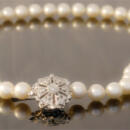
How to Clean Pearl Jewelry
Pearls are considered by many to be symbols of purity and chastity. But even symbols of purity get dirty from time to time. As you know pearls are produced when a mollusk secretes nacre to form a covering around a… by the heaving pressure beneath the earth’s surface. Therefore special attention should be used when cleaning them. Pearls should be the last thing that you put on and the first thing that you take off. Common personal products like … and perfume can severely damage pearls. They should be cleaned in warm soapy water periodically, gently scrubbing individually with a soft brush. A soft brush must be used so as not to scratch the surface of the pearl. Care must be …
-
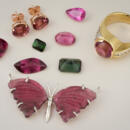
Gem in the Spotlight: Tourmaline
Tourmaline is one of the most beautiful gems that you’ve probably never heard of. Less popular than the likes of ruby or sapphire, tourmaline flies under the … and remains the best kept secret of gem collectors and connoisseurs who appreciate its unique properties and stunning array of colors. In fact, tourmaline is found in almost any color you can imagine, and people have most likely used … of years. But, before the advent of modern gemology, most tourmaline was believed to be ruby, sapphire, or emerald. Gemology of Tourmaline Gemologically speaking, tourmaline is its own mineral and not a species or member of a …
-
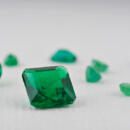
Gem in the Spotlight: Emerald
Springtime exudes life, full of bright colors and renewed energy. Emerald, May’s gemstone, captures this enthusiasm for …. This precious gemstone has been revered for over 4,000 years and is associated with love, fertility, and rebirth. Gemology of Emerald Emeralds are a member of the beryl mineral family (along with morganite and aquamarine) and are …’s hue depends on the presence of chromium and vanadium in the crystal structure. Emerald’s Mohs hardness rating is 7.5-8 making it softer than sapphire and harder than amethyst and other quartz varieties. The refractive index of …
-
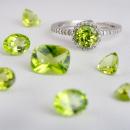
Gem in the Spotlight: Peridot
Peridot is a lovely yellow-green gem with a rich history. Legend has it that Peridot was the favorite gemstone of Cleopatra. The ancients called …gem of the sun”. It was believed that peridot could chase away evil spirits and dissolve curses but only when set in gold. Peridot is the birthstone for August. It is also the accepted anniversary gemstone for the 16th year of marriage… yellow-green color is very attractive. The name “Peridot” is simply a French word derived from the Arabic for green. Peridot’s color ranges from yellow-green to a warm olive green, and it is distinguished by its soft appearance. Color…
-
Frequently Asked Question about Jewelry
Here we answer some of your questions about jewelry in general. If you have a question you’d like answered, please contact us and we would be happy to help. What is a …, who knows and identifies them, can judge the elements and their beauty and value, and can apply this knowledge. This training and experience combine to make a gemologist. A gemologist like other professionals must keep up with …What is Moissanite? Moissanite is lab-created silicon carbide. It has become an excellent diamond imitation since it gives a positive reading on a thermal inertia testers (diamond testers). Some people use this property to fake …
-
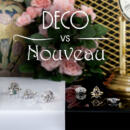
Art Deco vs. Art Nouveau Style Jewelry
… may like. The Art Nouveau and Art Deco movements have had a profound impact on virtually all forms of art and design, including jewelry, for over 100 years. Each style brought unique elements into jewelry design, reflecting broader … about the fundamental styles of each, you will start to see their influence everywhere. They are also important guide posts that can aid in dating vintage and antique jewelry. So, what are these two movements all about, and where did …
-
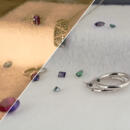
Gem in the Spotlight: Alexandrite
Emerald by day, ruby by night, more expensive than diamond and more illustrious than sapphire, emerald, or even ruby, alexandrite has been known… world as one of the most sought-after gems for the better part of 200 years. But, what makes this stone so special? Gemology of Alexandrite Alexandrite is the extremely rare, color-change variety of a gem species called Chrysoberyl. …appears bluish-green in daylight, fluorescent light, and some LED light. Under incandescent light, candle, and firelight, alexandrite appears purplish-red. This is because of how the trace element chromium interacts with alexandrite’s …
-
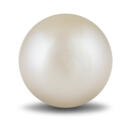
Gem in the Spotlight: Pearl
Pearls have captured the imagination and adoration of people from diverse backgrounds throughout history. They are both simple and infinitely … science, history, and lore surrounding this most unique gem. How Are Pearls Formed? Pearls are formed when a foreign object enters the shell of a mollusk and irritates the soft mantle tissue within. In response to the irritant, the … object and protect itself. Over time, layer upon layer of nacre is deposited around the irritant, eventually forming a pearl. This process can occur naturally or via human intervention. Natural pearls grow in the wild without human …